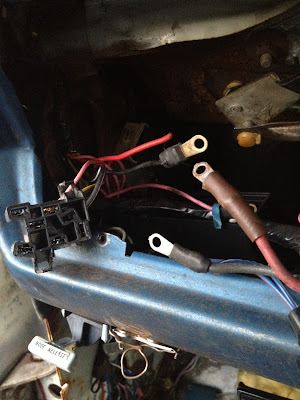jarvitron
Well-Known Member
Hello - I'm trying to find some information about "fleet" or "taxi" wiring (from the factory). I was trying to look at my harness to see if I needed to do a bulkhead bypass, and found that I have two ~8 gauge wires passing through their own rubber firewall grommet versus a large wire connected to the bulkhead, and the wiring appears to be protected by fusible links as specified in all the bypass conversion guides. Does my car have "fleet" wiring? Anybody have a car with this from the factory that can share a picture of theirs? I still have an ammeter, if I don't bypass it, will I fry my harness? I'm getting ready to do a magnum swap and want to know if I need to upgrade my wiring or bypass the ammeter/change to a voltmeter for the heavier alternator. I'll snap pictures of the firewall connection when I get home.




















